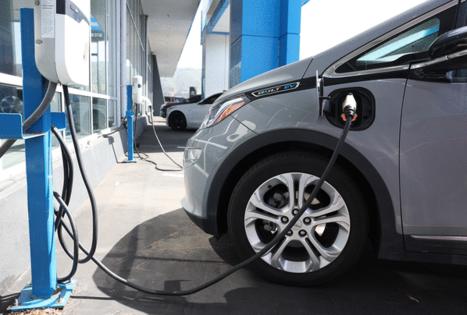Prices are falling on used EVs. Here's how to get a deal
Published in Automotive News
Henrietta Burroughs was so deeply devoted to her 1991 Dodge Dynasty that she saved its floor mats to honor the car’s two decades of service.
But everything else about its replacement — a bright red 2017 all-electric Chevy Bolt, now adorned with the Dynasty’s old floor mats — is better.
“It’s reliable, it’s practical, it’s modern — and what really sold me on this car was that it was within my price range,” said Burroughs, an East Palo Alto journalist whose son and daughter also own EVs.
The high cost of electric vehicles has been the major barrier for average Californians seeking to trade in their gas guzzlers. This has slowed the widespread adoption of cleaner cars that help fight climate change and improve air quality, according to a 2023 University of Texas study.
But a price war is sweeping the EV industry, led by Tesla, causing a surge in the supply of used electric vehicles — so prices have plummeted.
Used electric cars are now as cheap as gas-powered cars and hybrids, according to an analysis by research company iSeeCars of one- to five-year-old used cars sold in February 2023 and in 2024.
“Stacked” incentives, as well as lower maintenance, help reduce the cost still further. Electricity is cheaper than gas. And income-qualified residents can drive solo in carpool lanes and get discounts at tolls.
By “stacking” incentives, a low-income family in San Mateo County, for example, could get a 2020 Chevy Bolt for free — if they qualify for the $10,000 Clean Cars For All grant, the $2,000 Peninsula Clean Energy rebate, and the $4,000 PG&E rebate.
Plummeting prices are expected to accelerate the transformation of the automobile market. On Wednesday, the Biden administration issued a regulation with tough new standards for tailpipe pollution, ensuring that more than half the new cars sold in the U.S. by 2032 are zero-emission vehicles. California already has gone much further, setting a goal of 100% zero-emission vehicles new-car sales by 2035.
When EVs were first introduced, owners tended to be enthusiastic “early adopters” who were affluent, tech-savvy and white or Asian. Vehicle inventories were low, and dealer incentives were rare.
...continued
©#YR@ MediaNews Group, Inc. Visit at mercurynews.com. Distributed by Tribune Content Agency, LLC.







Comments